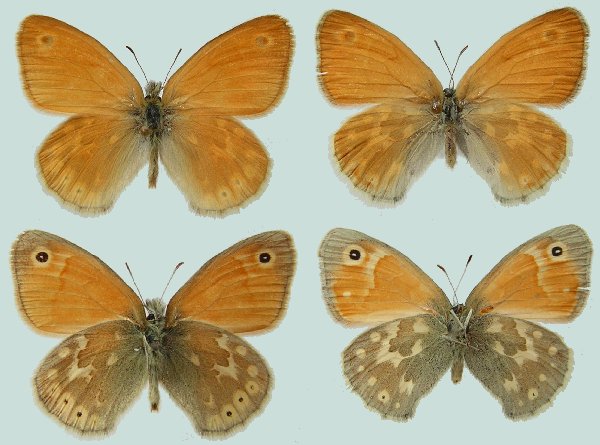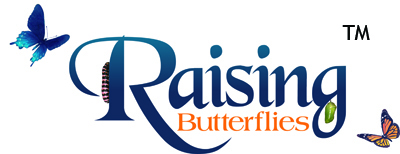Coenonympha ochracea pseudobrenda
Photo Life History: Coenonympha ochracea pseudobrenda;
Habitat: Mountain Canyons
Host Plants: Bunch grasses.
Suitable Lab Host Plants: Bromus inermus; Phalaris arundinacea. (Larvae will accept most grasses in the lab.)
How to Find Female Butterflies: Click here. Females can be flushed out of meadows by gently waiving a butterfly net over the tops of grasses.
Caring for Live Female Butterflies: Nectaring techniques
Methods of Female Oviposition: Open Screen Cages; Portable Cages; Potted Plant Sleeves. (Females sometimes oviposit on dead grass blades.)
How to Find Eggs:
How to Hatch Eggs: Consolidate eggs into one container.
How to Find Caterpillars in the Field:
How to Find Pupae in the Field:
Caterpillar setups: Open terrariums; Open Bucket; Potted Plant
Larva to Pupa: Caterpillar silks to leaf or twig; creates and attaches cremaster; hanging as a J before pupating.
Number of Broods per Year: 1
Overwintering Stage: Third or fourth instar.
Overwintering Strategies:
Post-Hibernation Strategies:
Emergence: Emergence Container
Avoiding Diapause Techniques:
Disease Prevention: Change out host plant and remove frass every three to five days.
Emergence: Emergence Container
Field Notes: Unlike Coenonympha ochracea elko, I have not been able to get lab-reared larvae of Coenonympha tullia pseudobrenda to avoid diapause at third or fourth instar. They continue to feed; but do not grow past a certain size and instar. Whether or not this is a specific difference between the two taxa, I don't know.

